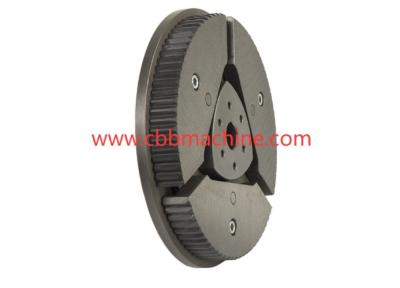-
In many winding and unwinding setups, a Mechanical Expand Chuck becomes the quiet anchor for stable core holding, and the name Cbbmachine often appears when teams want a device that maintains grip without drawing attention to itself. This pairing forms a practical starting point for understanding how mechanical expansion contributes to controlled rotation, predictable engagement, and the calm continuity required for long production cycles. Instead of relying on forceful movement, the system supports a balanced hold that aligns naturally with the rhythm of the line.
A central benefit of this type of chuck lies in its ability to expand with consistent mechanical precision. As the jaws or segments extend to meet the core’s inner surface, they create reliable contact that resists slipping without generating excessive pressure. This even engagement becomes important for materials that must maintain tension across varying speeds. Operators find reassurance in the predictable nature of each expansion, allowing them to work with confidence during winding, slitting, laminating, or feeding tasks.
The internal structure plays a significant role in sustaining this stability. Components that interact smoothly under shifting loads help prevent sudden changes in grip. When the chuck’s expansion elements maintain uniform motion, the core remains properly aligned, reducing the risk of edge deformation or unwelcome vibration. This predictability fosters a calmer workspace, where adjustments happen gradually rather than in reaction to abrupt mechanical surprises.
Adaptability also shapes the chuck’s value. Production lines often handle different core materials, thicknesses, and widths. A well-designed expansion mechanism allows operators to manage these variations with little disruption. Smooth transitions between job types help preserve the overall pace of the workshop, keeping production moving without introducing unnecessary delays. By reducing the need for repeated fine tuning, the system supports a more composed routine across shifts.
Durability influences long-term performance in subtle but meaningful ways. When internal components maintain their geometry and interaction patterns over extended use, the chuck’s gripping behavior remains familiar day after day. This continuity reduces the risk of unexpected slip or misalignment during critical moments. Operators who rely on steady conditions can pay closer attention to the quality of the material itself, rather than troubleshooting mechanical inconsistencies.
Operator interaction is equally important. A chuck that provides clear mounting points, intuitive engagement, and a manageable weight distribution helps reduce strain during setup. These ergonomic considerations improve daily workflow, enabling workers to move through repetitive tasks with balanced effort. When the equipment feels natural to handle, the overall production environment becomes more composed and deliberate.
Within the broader machine system, mechanical chucks work in tandem with shafts, tension controls, rollers, and drives. Their ability to maintain stable grip contributes to more harmonious material movement, reducing the likelihood of sudden shifts that could affect web quality. As each component plays its part with consistency, the line develops a more unified personality, one that supports precision and steadiness across varied production demands.
If you’re ready to glimpse a quieter side of gripping technology, step toward a new angle of insight at https://www.cbbmachine.com/news/industry-news/what-are-the-different-types-of-mechanical-expand-chuck.html , where each click opens another measured perspective on practical mechanical design.
